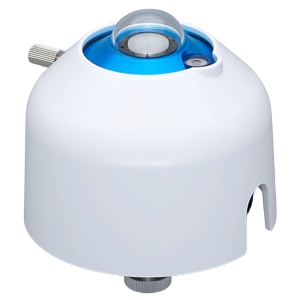Menu
Menu


EKO Albedometers are based on a modular design, comprising two MS or S-Series pyranometers combined using the EKO Instruments MS-Albedo Kit, plus glare screen, and optional MV-01 Heater & Ventilator.
Compatible with all S-Series pyranometers, the MS-Albedo Kit allows users to create custom configurations to suit their specific application.
The MS-80S Albedometer utilises two Class A MS-80S ‘fast-response’ and ‘spectrally flat’ Pyranometers with 5-year warranty and competition-busting 5-year recalibration interval, each with our unique 4-channel analog and digital interface, providing compatibility with 99% of data loggers and SCADA systems.
Level A EMI/EMC electronic surge filtering, and a suite of internal temperature, humidity, tilt and roll angle sensors help ensure optimal performance with reduced maintenance, contributing to greater efficiency, higher yield, and more rapid ROI.
Designed for accuracy, built for reliability, and compliant with IEC 61724-1 requirements for Class A PV monitoring systems, the MS-80S Albedometer is the best quality, and best value, albedometer available; delivering industry-leading accuracy in solar albedo and reflected solar radiation measurement.
Key Features:
| ISO 9060:2018 | |
|---|---|
| Response time 95% | <0.5 Sec |
| Zero offset A – Thermal Radiation (200W/m²) | |
| Zero offset B – Temperature change (5K/hr) | |
| Zero offset C – Total zero off-set | |
| Non-stability (change/year) | |
| Non-linearity (100 to 1000W/m²) | |
| Directional Response (at 1000W/m² | 0 to 80°) | |
| Spectral Error | |
| Temperature response (-20°C to 50°C) | |
| Tilt Response (0-90° | 1000W/m²) | |
| Additional Signal Processing Error | < 1 W/m² |
| Technical Specifications : | |
| Wavelength Range | 285 to 3000 nm |
| Irradiance range (W/m²) | |
| Signal Output | |
| Sensor Diagnostic | |
| Operating temperature | |
| Supply voltage | |
| Power Consumption | |
| Ingress protection | IP67 |
| Calibration traceability / uncertainty | |
| Standard Cable Length | |
Contrary to popular belief, Lorem Ipsum is not simply random text. It has roots in a piece of classical Latin literature from 45 BC, making it over 2000 years old. Richard McClintock, a Latin professor at Hampden-Sydney College in Virginia, looked up one of the more obscure Latin words, consectetur, from a Lorem Ipsum passage, and going through the cites of the word in classical literature, discovered the undoubtable source. Lorem Ipsum comes from sections 1.10.32 and 1.10.33 of “de Finibus Bonorum et Malorum” (The Extremes of Good and Evil) by Cicero, written in 45 BC. This book is a treatise on the theory of ethics, very popular during the Renaissance. The first line of Lorem Ipsum, “Lorem ipsum dolor sit amet..”, comes from a line in section 1.10.32.
The standard chunk of Lorem Ipsum used since the 1500s is reproduced below for those interested. Sections 1.10.32 and 1.10.33 from “de Finibus Bonorum et Malorum” by Cicero are also reproduced in their exact original form, accompanied by English versions from the 1914 translation by H. Rackham.





